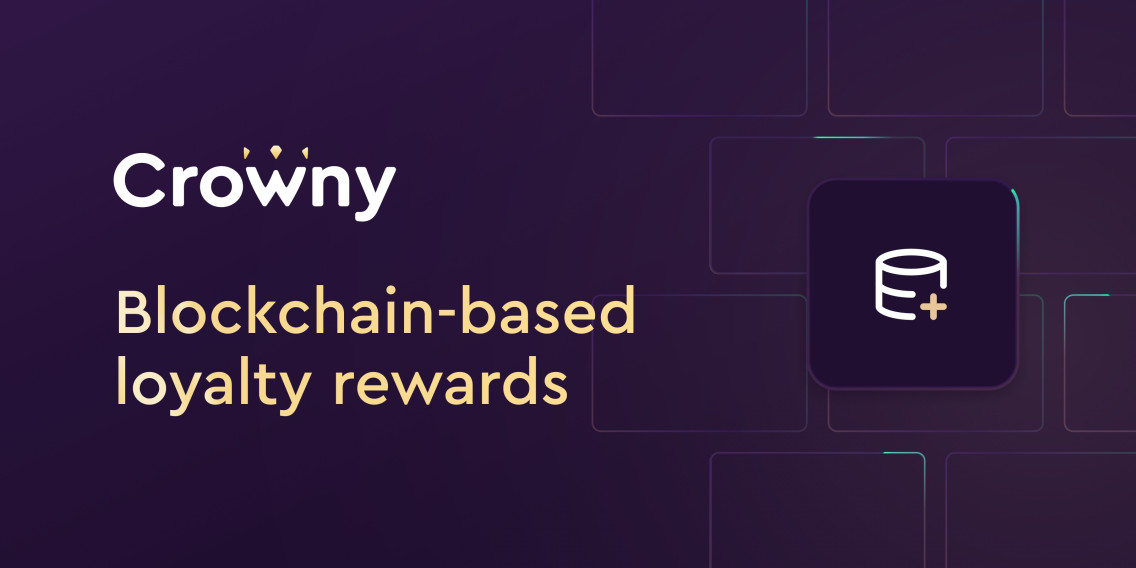Loyalty rewards of traditional programs have issues, both for businesses and consumers. We know the issues, and how to tackle them.
Table of contents
✅ Traditional loyalty rewards and their main issues
✅ Key benefits of blockchain-based loyalty rewards
✅ The ultimate rewards program
Traditional loyalty rewards and their main issues
The main goal of a loyalty program is to offer a mutually beneficial solution for businesses and their most loyal customers. To have an engaging community performing repeat purchases is the ultimate goal. Consumers that have a good experience with your brand are more motivated to remain loyal, besides other loyalty program benefits. With traditional loyalty programs, however, consumers are experiencing friction points in their customer journey. These frictions can harm brand loyalty and the brand image. Over time, businesses have encountered similar challenges and more.
Main issues of loyalty rewards systems
An essential aspect of offering a seamless experience on the path to purchase is to remove frictions over all touch points. Overall, points systems are fragmented. The redemption processes are unclear and overcomplicated. These inconveniences result in a lack of engagement for users, with a bounce from conversion or even a negative brand image as a consequence.
Businesses are experiencing the downsides of traditional loyalty rewards. In the U.S. alone, over 33% of all generated rewards are never used (digital bits). The complicated and overly diverse loyalty systems result in an overall lack of customer engagement and a decrease in repeat purchases. High maintenance and support costs are pain points across the entire industry. Different systems require education for everyone who intends to work with them.
So businesses choose to implement their own systems a lot. There are many different loyalty programs in the market, and they all work in silos. That means they make use of different formats, applications, rules, requirements, and currencies of loyalty rewards. It’s inconvenient for users, with most systems being outdated and inefficient as well.
Compared to the available tech nowadays, traditional loyalty systems are lacking performance. They are expensive, don’t offer the consumer instant redemption of their rewards, and can’t provide the flexibility to scale with exponentially growing businesses. Learn more about the differences between traditional loyalty programs versus crypto loyalty programs on the Crowny Platform.
Main issues of loyalty rewards
Most businesses haven’t got a clue what happened with the outstanding value on the consumers' side. Essentially, this is debt that businesses have to take into account for their annual balances. Another massive issue with traditional loyalty rewards is that they are not traceable. Concerning the lack of traceability, the issues with the traditional loyalty rewards are:
☑️ Insecure transactions
☑️ Fraud-sensitive currencies
☑️ Data security issues
☑️ Lack of smart marketing insights
☑️ Untrackable whereabouts of value
The siloed approach from traditional loyalty programs comes with more disadvantages. The distributed rewards value isn’t perceived as real cash value. They can only spend the earned rewards on the range of items the program owner offers at the moment. More often than not, these aren’t relevant enough to the consumer. In the end, the consumers are not getting the rewards they were hoping for.
Another issue has repeatedly been highlighted by loyalty program members. Traditional loyalty rewards are often not interchangeable, meaning there’s a limit to spending them. It explains why most of the loyalty program value per year is never spent, besides the inconveniences of traditional systems. But there’s another angle to this data. Most traditional loyalty programs don’t give their most loyal customers the freedom to do what they please with their earned value.
Key benefits of blockchain-based loyalty rewards
Performance-driven blockchain technology can solve real-world problems in a lot of industries. Marketing and loyalty initiatives are good examples. These are areas in which tokenized economies, like a points-based loyalty program, are applied in various ways. An essential aspect of blockchain-based loyalty programs is the ability to maintain a universal system across programs. The technology does a way better job than the current points systems. Redemption processes are clear, logical and streamlined.
With a blockchain like Solana, the transactional and distribution system is fast, efficient, sustainable and cheap. It ensures a seamless experience for users, improving the brand experience. Besides these benefits, blockchain-based rewards are:
☑️ Trackable. Businesses know exactly where and what happens with the distributed value
☑️ Enabling smart marketing. Tracking opportunities provide a lot of insights in relation to the consumer behaviour of a brand community
☑️ Scalable. Solutions driven by blockchain technology are endlessly scalable for the future growth of any business
☑️ Frictionless rewards. With blockchain-based loyalty rewards and crypto rewards, businesses leverage the technology to improve brand experiences for their communities
Key benefits of blockchain-based loyalty points
Loyalty rewards are digitized more often nowadays, it tackles several problems like having the rewards on a piece of paper. Blockchain technology offers advantages way past this phase, tapping into the next level of efficiency and program satisfaction. Compared to traditional loyalty points, blockchain-based loyalty rewards come with the following advantages:
☑️ Automated administration. Automatically maintained loyalty records
☑️ Secure transactions. A lot less sensitive to fraudulent behaviour
☑️ Data protection. With the security protocols in place, all user data is safe
☑️ More perceived value for consumers. It's a verified currency on the blockchain network
Key benefits of crypto rewards
Implementing a crypto rewards program comes with the same advantages as a program with blockchain-based loyalty points. In essence, the major difference is that crypto tokens are publicly tradeable. This comes with a few benefits as well:
☑️ Instant value. Exchangeable for dollars, for example
☑️ Freedom. Users have control over their rightfully earned assets
☑️ Potentially appreciating rewards. The value is influenced by supply and demand
☑️ Valid forever. The crypto loyalty rewards will remain a usable currency without being dependent on a brand’s campaign
Crypto loyalty rewards for consumers are interchangeable, rewarding them with instant value. Blockchain-based loyalty points come with the advantages of blockchain technology. They are branded and can only be spent at the destined loyalty program, motivating the customer to return to the brand. At Crowny, we combine the two approaches in our loyalty platform, offering the best of both worlds. App users can earn rewards based on the interact-to-earn model.
The ultimate rewards program
As a business owner, you should aim to offer your community the best possible brand experience with a rewards program that works for both parties. In the end, it is lasting customer loyalty that generates the best results.
Combining loyalty points and crypto rewards is unique. Our loyalty and marketing solution helps you to grow your user base and maximize customer retention. Increase your revenue by rewarding consumers with incentive-driven interactions through campaigns and branded loyalty programs in the Crowny App. Curious how we make things work?
Get early access to a demo here.

